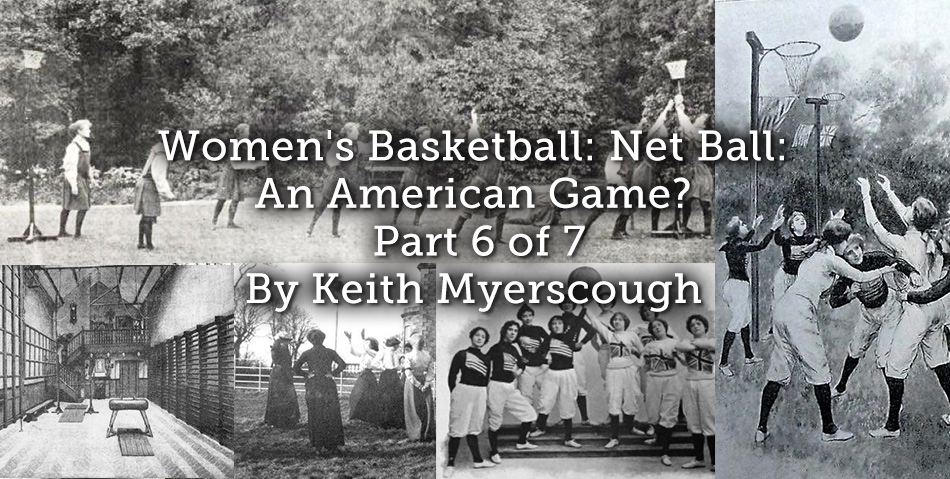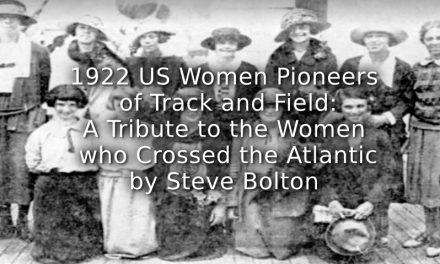In 1892 the new American game of ‘Basket-Ball’ was introduced into England by the President of the Birkenhead YMCA, Mr Charles J Proctor who had seen the game being played when on a business trip to North America. In August 1893, Madame Bergman-Österberg (MBO), brought women’s basketball back to England having attended the World Congress on Education in Chicago. It was during her extensive tour of the eastern seaboard of North America that she witnessed a game of basketball as part of a display of a girl’s physical education syllabus. She was impressed with this new game as it had the potential to provide a counter-balance from the gymnastic activities and drill exercises so prevalent in physical education lessons in England. On her return to London MBO introduced basketball to the physical education students at her Hampstead Heath College.
From 1893 to 1895 MBO’s students experimented with the new indoor game at her Hampstead gymnasium. It is not clear how MBO introduced her students to the game as she was not a great advocate of playing games; she simply saw the value in a balanced programme of sporting activities. The court was far from ideal as the gymnasium was long and thin with apparatus fixed to the walls. The playing area required the implementation of local rules; the goals were two wastepaper baskets hung from opposite ends of the gym, and the boundary lines were the walls of the room, which meant that the ball was never out of play. Just how many players were available at any one time and how the game was officiated is not clear – from 1886 to 1893, there had been only 58 ladies who had qualified as teachers of physical education. Thus, player numbers must have been yet another limiting factor in the development of the game.
In September 1895, MBO moved her teacher training college to Dartford Heath in Kent, which provided a purpose-built gymnasium and adequate playing fields for outdoor basketball. The goals in the new gymnasium were metal rings instead of baskets, which by 1901, had been fitted with a sleeve of netting in order to ensure that the ball had passed down through the ring. The netting was added at the behest of E Adair Impey (nee Adair Roberts), thus promoting a name change to ‘Net Ball’. The playing court was now divided into three equal sections and the size of the ball was larger than the soccer ball previously used. As to why these changes were made is not documented, but MBO did receive an American guest, Dr Toles (or Tolls), in 1895, who is said to have ‘given advice’ on how to play basketball.
Further advice and guidance was given to the Dartford students in 1898 when a Miss Porter of Baltimore ‘demonstrated basketball at the college.’ The account given of the demonstration suggests that Porter’s version of the game was sufficiently different from the version being played. The Dartford ladies rejected this latest version of basketball, suggesting that they ‘found Miss Porter’s work interesting, but preferred their own variety of the American Game.’ In October 1897 the Windsor Magazine described the American game as ‘a new and exceedingly fascinating sport called “Basket Ball”.’ Thus, the Dartford version of basketball had achieved parity with dancing, fencing and fives when played indoors, and lawn tennis, cricket and hockey when played outdoors. Their preference of the rules and regulations created a version of the American game which the Dartford students officially named ‘net ball’ from 1901.
One factor, above all others, differentiates the development of basketball from all other sports. That is, the number of versions of the game that proliferated from the 1890s to the 1910s. One such version of the game, ‘American Net Ball’, serves to underline the popularity of basketball as both a participatory and spectator sport. It is claimed by American, Mr Jerry Hart, that he had invented American Net-Ball c.1885, some six years before Naismith had invented basket-ball. If true, this statement re-writes the history of not only the origins of basketball but also the historiography of women’s basketball. Hart and his wife were Music Hall performers who introduced ‘their game’ to London audiences in 1899. The Hart’s matched five female American players against 5 players from England; the games were so successful that the Hart’s toured the country playing exhibition games in theatres.
- The game is played with a large football with ‘a hoop net suspended above the heads of the players’ at each end of the court.
- Players are allowed to play the ball with any part of the upper body, but not the feet.
- ‘The ladies naturally played in knickers and Guernsey’s, and a very smart lot they looked.’
- ‘It is not a rough game, although now and then a “cropper” had to be encountered, and there seems no reason why it should not become as popular with us as it is said to be in the United States.’
- A spells of play last 3 minutes with one minute rest.
In October 1905, the Penny Illustrated Paper ran an article on Hart’s version of the game with the title, ‘England v. America: The New Game of Basket-Ball for Women’. One important departure from previous published rules was the inclusion of a third goal, it was stated that, ‘In addition to the two net-goals, there is a third net, erected on one side of the playground. A ball in either of the net-goals counts two points to the scoring side; a ball in the neutral net counts one. … The three net-bearing poles form a triangle.’
However, if the ‘American game of Net Ball’, introduced in British Variety Theatres in May 1900, had become popular – the game as we know it, may never have survived. The England versus America series of commercially motivated challenge matches serves to further confuse any working definition of the game of basket-ball or net-ball at that time. However, by 1901 MBO’s students had established Net-Ball as a ‘girl’s game’ through the Ling Association, firmly embedding the game into Britain’s early-20th Century middle-class leisure culture.
Article © Keith Myerscough










